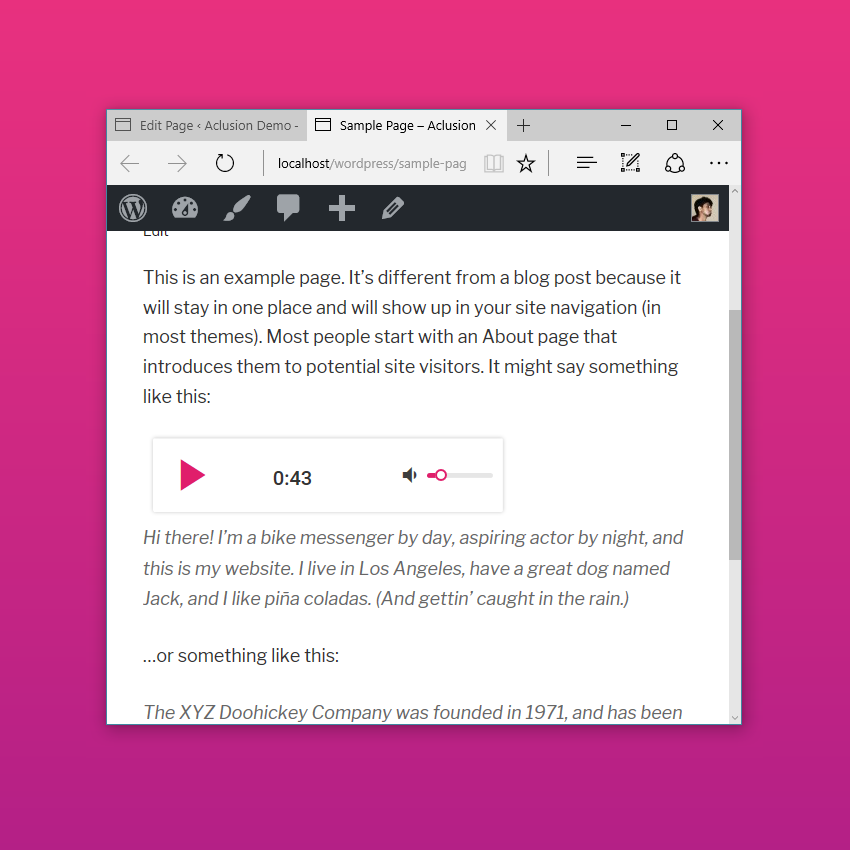

Since the segment file names were derived from their id attributes, I was able to just point at the file without a lot of poking around. Nothing too fancy, just an HTML wrapper, with most of the “work” happening in the div2 element. I wrote another XSLT to preview what was going on and make sure this approach was going to work ok. This generated a nice file of the commands to run.Īt this point, all the data has been processed, so I need to see if this this going to actually work. I wrote a quick XSLT to generate a shell script that would generate the ffmpeg commands to run. In the TEI source are the start and end times for each of the “snippets.” My go-to tool for working with media is ffmpeg, and I knew I could break up the files into components, copying the bitrate into a new mp3. This would allow the browser to provide its native playback mechanism, and allow individuals to grab the segments for remixing (still waiting for an auto-tuned remix of “Spotted Horses”). My first instinct was to take the files and split them into “clips” on the page. Score one for the Internet! Now to figure out the best way to do this.

The great thing is that this will work on a mobile device as well.

This provides something on your page like this: You can check out a good table for codec support for audio, but it basically boils down to needing an MP3 and an Ogg Vorbis version of the audio files to provide for nearly all the browsers (IE being the outlier, with this working of IE 9+). without a plugin), right? Really the only really horrible thing is that not every browser handles the same “native” format. You know that modern browsers (everything but IE < 9) can play audio natively (i.e.
#Html5 audio javascript code#
Unfortunately for the Faulkner audio, the code got to the point where the approach stopped functioning consistently across all desktop browsers (interestingly, Chrome seemed to manifest this issue most consistently), and oh yeah, there are those iOS-based mobile devices that can’t play this either. This has been a real boon for users as it has allowed developers to really push what the web is capable of as a run-time environment. Browsers have been in a war with each other for speed, implementation of “standards”, and market share. At the time (late 2000s), the approach of using a third-party plugin to provide “advanced” interaction with a media element was pretty much the only game in town.Īs with any project that relies on web technology, eventually things start to break, or just flat-out not work on devices that can access the Internet (e.g. While this is kind of a nasty bit of JavaScript, it (somewhat) abstracts the Object embed code:Īt the time, the WHATWG specifications for audio were still pretty nascent, and didn’t have a lot of actual implementation saturation in browsers. Using the associated API, I could generate a clip of the data with something like this: This allowed me to provide “random” access to the components of the audio, without needing to split up the files. In order to provide playback of an individual clip, we used a streaming server ( Darwin Streaming Server) that was being managed by another group. The project, Faulkner at Virginia, transcribed the audio and then keyed the main components of the audio to the text using TEI. Several years ago I worked on a project to take recordings made of William Faulkner while he was the Writer-in-Residence at the University of Virginia in 19.


 0 kommentar(er)
0 kommentar(er)
